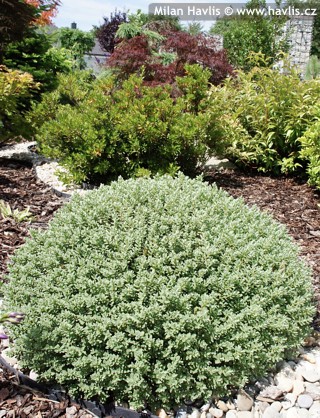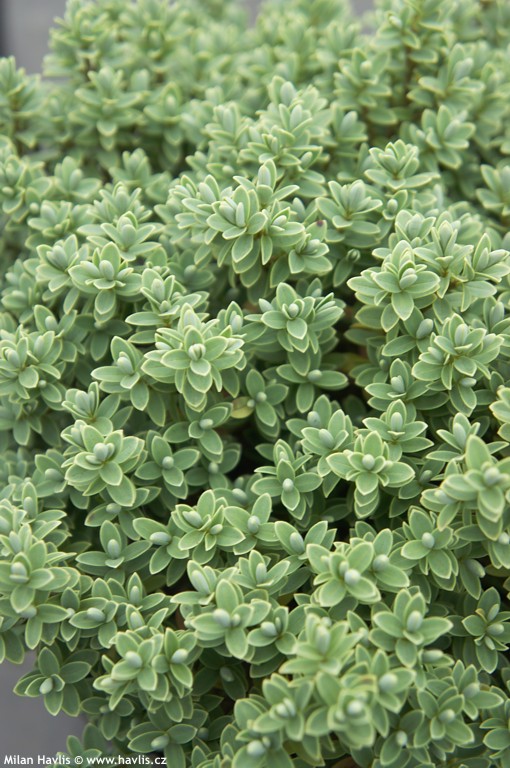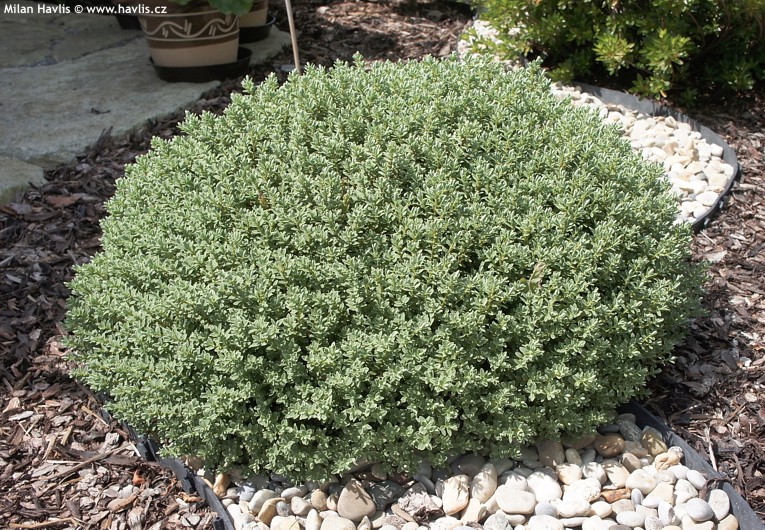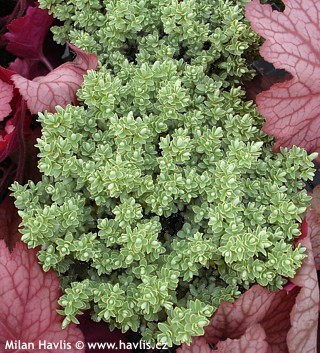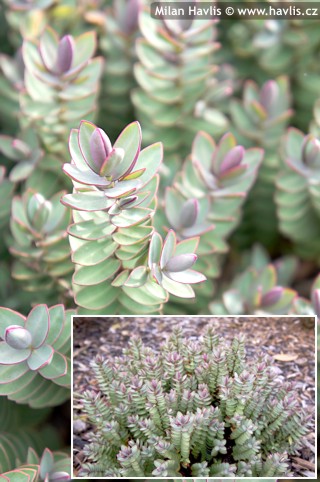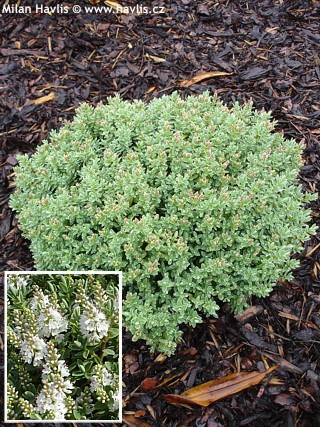Hebe topiaria topiarist's hebe
Hebe
Hebe - veronica is a genus of evergreen shrubs or even small trees native to New Zealand. They thrive in its naturally humid climate and mild winters so if we want to grow some its species in Central European continental climate we must carefully choose those which have proved hardy and have adapted to our drier conditions. Those are usually species with small, and often glaucous foliage. We offer a wider range of hebes hardy to USDA zone 6, only a few have survived temperatures lower than -24°C (e.g. hebe ochracea).
Topiarist's hebe is a low, mounding, evergreen shrub with pale green, small, ovate to elliptic leaves and terminal clusters of small, white flowers. It grows slowly to medium fast, spreading outwards, forming a neat cushion. It needs no or very little pruning. It can be clipped in early spring after all frosts or after flowering in early summer.
Hebes need very well-drained but constantly moist, poor or medium fertile soil that is anything from slightly acidic to slightly alkaline. It needs good mulching at all times. They are hardy on sites sheltered from strong, drying winds, and tender species should be protected from direct winter sunlight. Hardy to about -24°C (USDA zone 6) and should the temperature drop lower protect them with fir branches or white woven. water well before frost.
Last update 11-03-2013; 15-12-2019

































